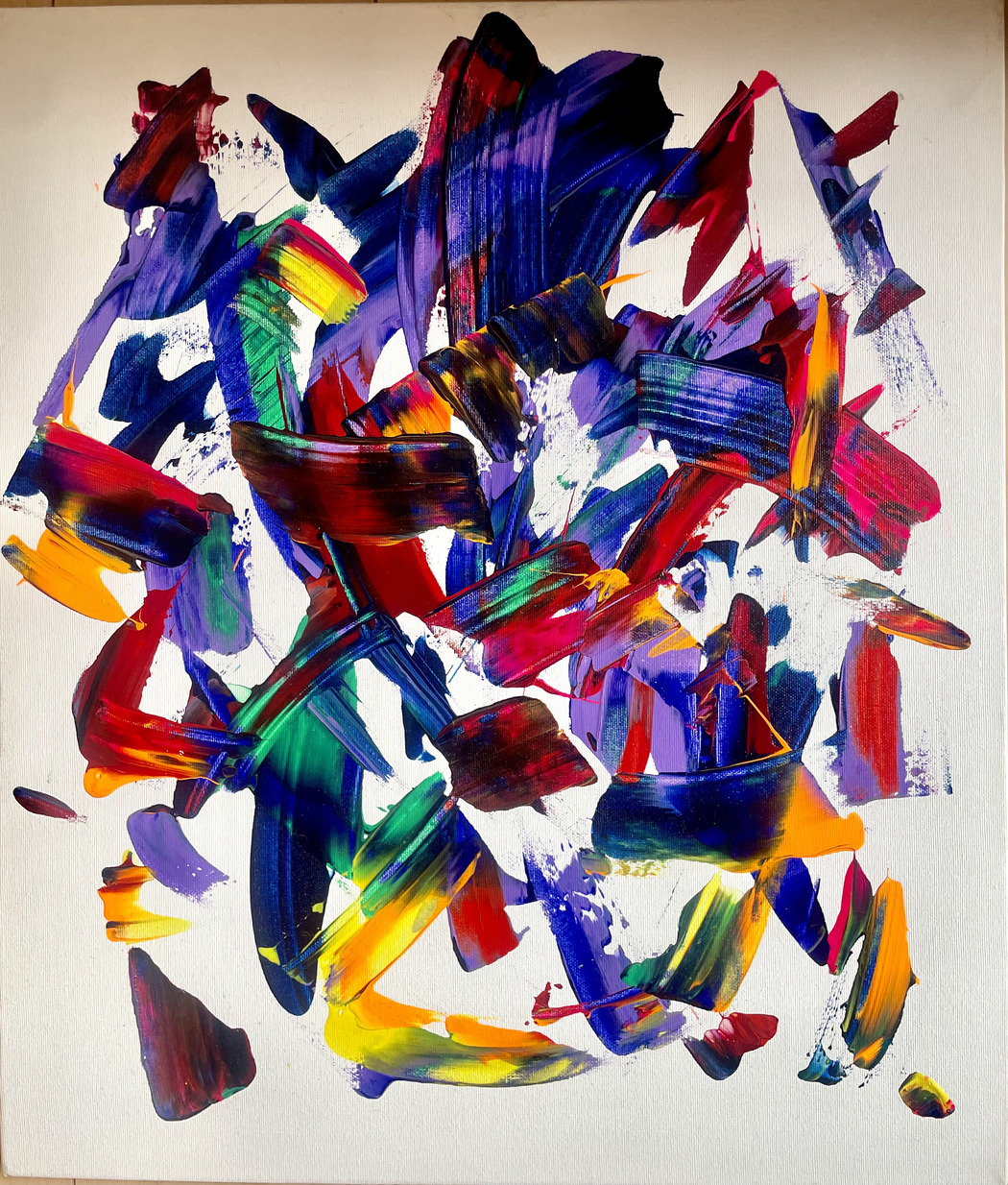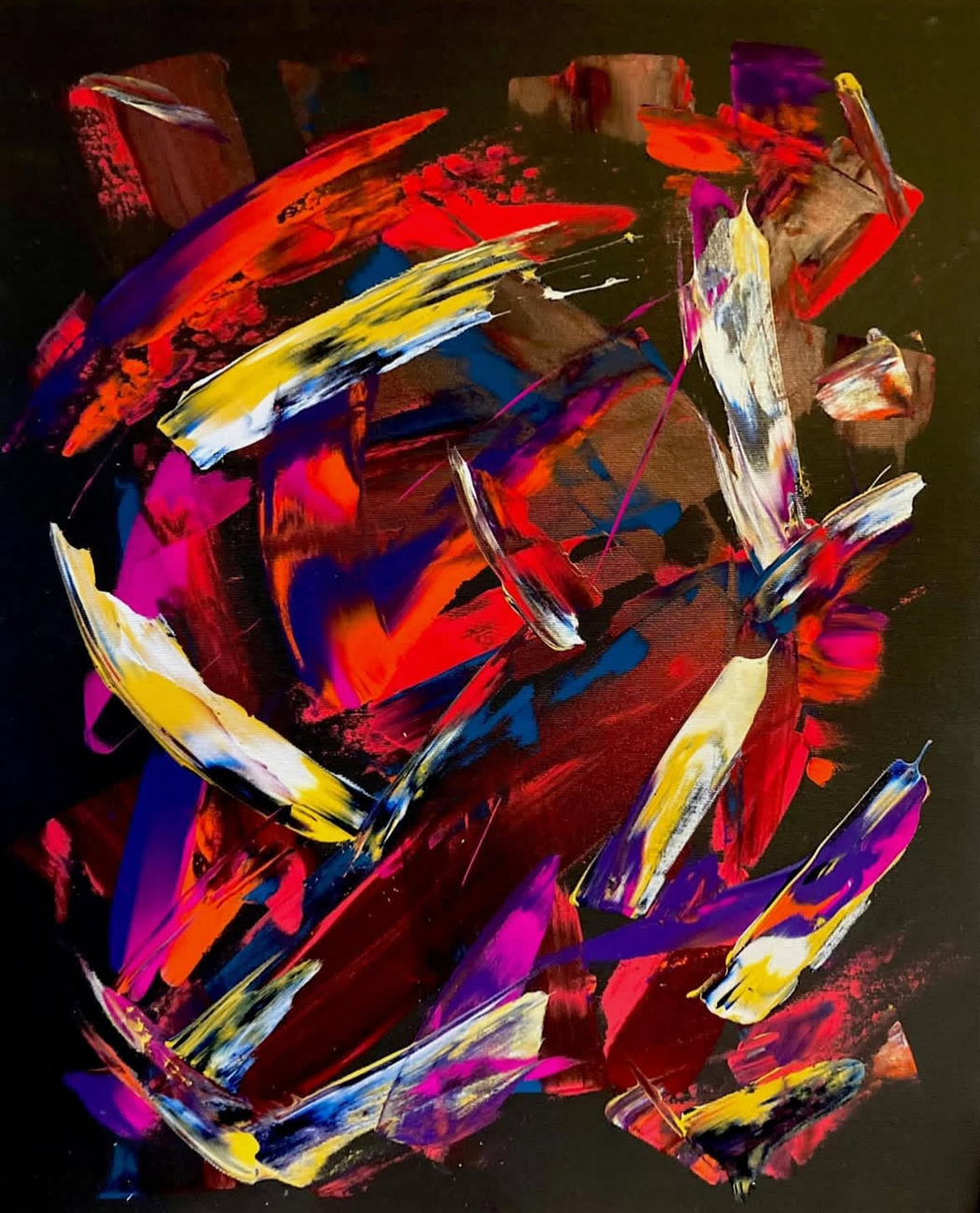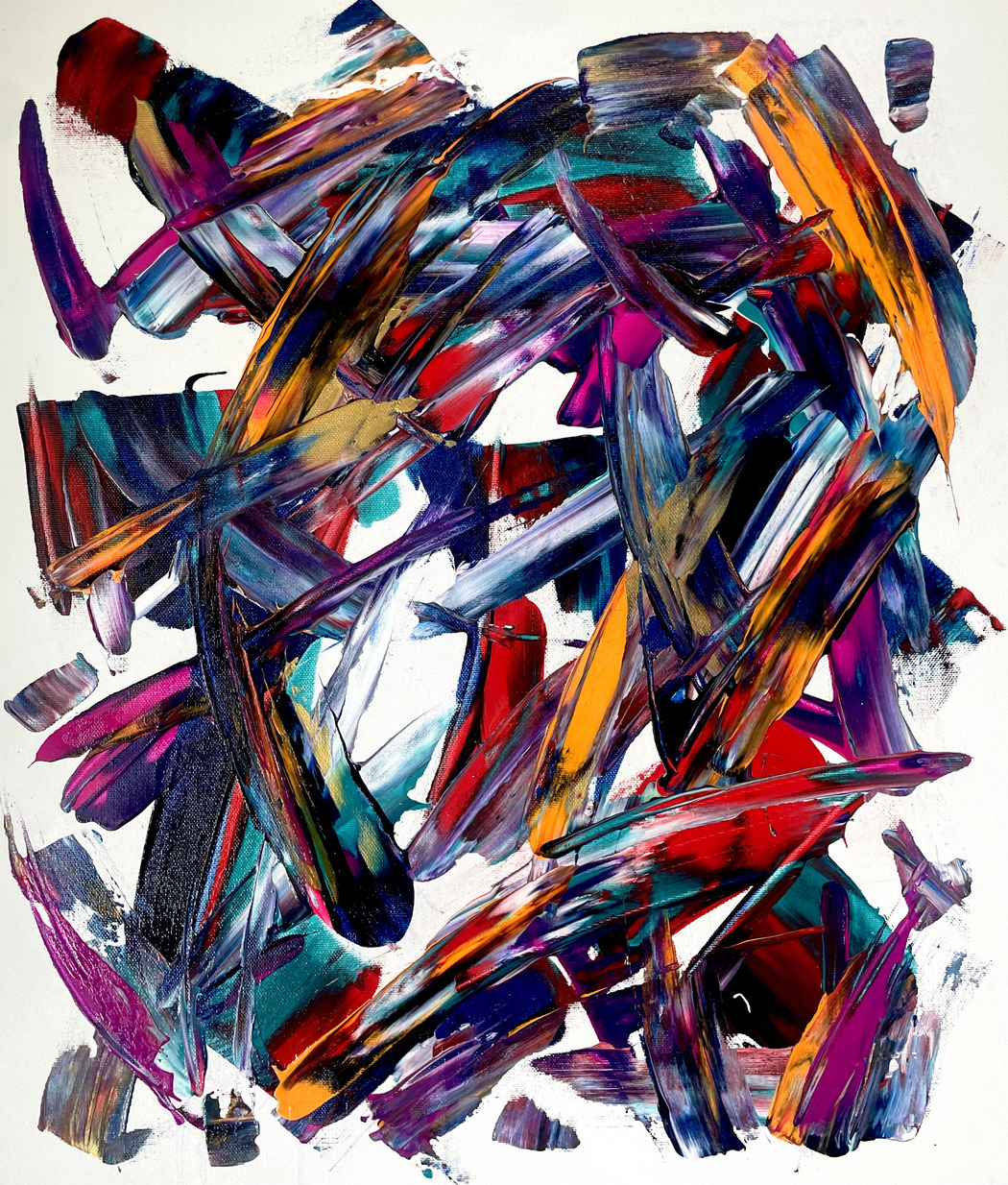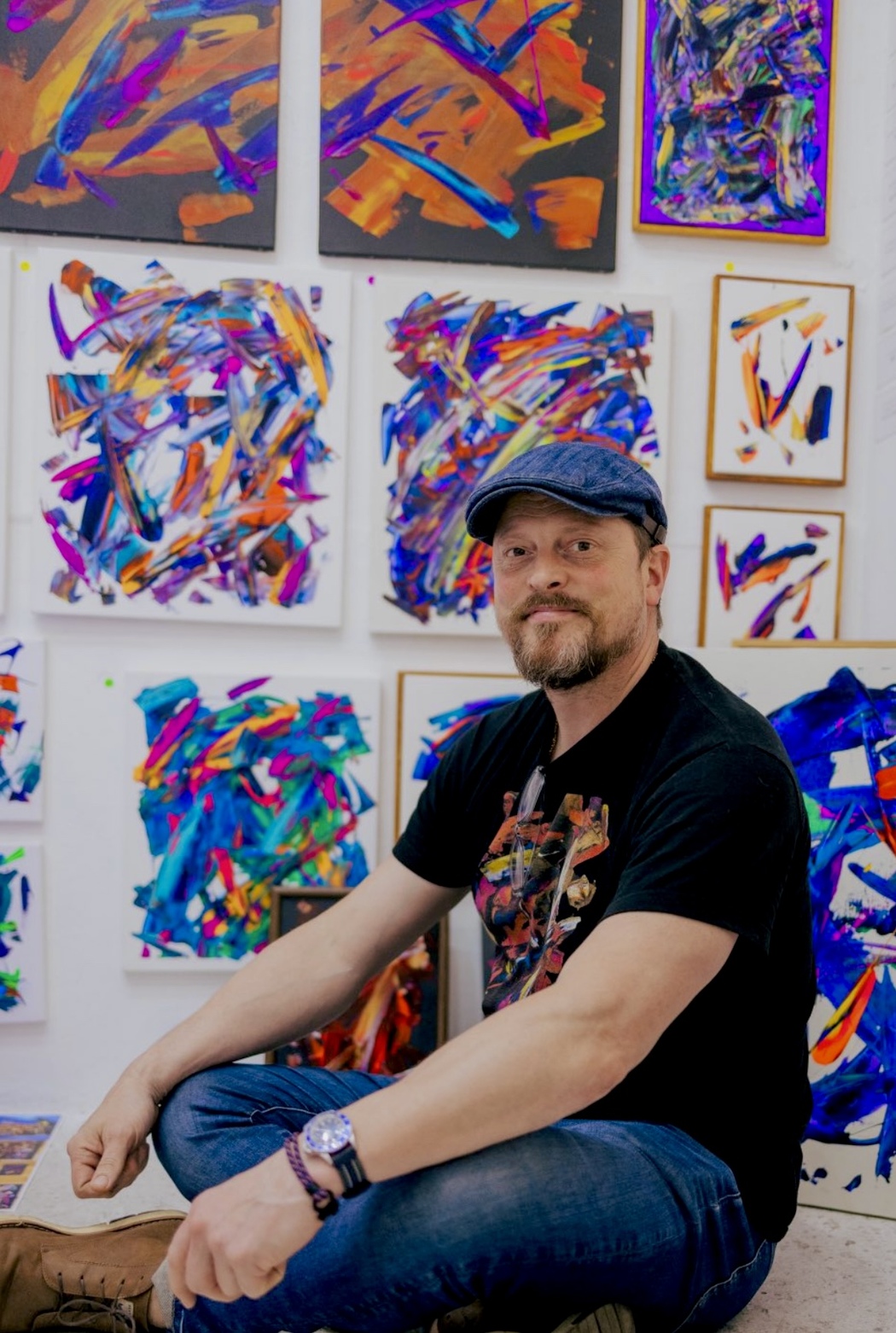Rich Heselton
Year of birth: 1976.
Where do you live: Tokyo, Japan.
Your education: BA in International Relations, Takushoku University; MSc in TESOL, Aston University.
Describe your art in three words: Vibrant, Spontaneous, Bold.
Your discipline: Abstract painting.
Instagram
What first drew you to abstract art, and how did your artistic journey begin?
My journey into abstract art began during the COVID pandemic. I started painting with my children to help ease their anxiety. In the process, I discovered a deep connection with colour and movement. Abstract art gave me the freedom to express emotions and ideas that words could not capture.
That freedom, the movement, the unpredictability, the emotion, and the reflective process drew me in and continues to inspire me today.
How has living in Tokyo influenced your artistic expression and creative process?
Tokyo constantly feeds my curiosity and creativity. It is a city of contrasts; quiet shrines tucked beneath towering neon, the pulse of tradition alongside modern motion. Living here means being surrounded by rhythm and energy, and all of it finds its way into my work. Every walk, every season, every corner of the city adds something to my process, shaping the way I see and create.
Having spent over thirty years in Japan, much of it dedicated to practising martial arts, I’ve developed a strong sensitivity to movement, rhythm, and stillness. That embodied awareness naturally carries into my painting. Each brushstroke becomes a physical gesture, guided by breath, focus, and flow.
 Rich Heselton | Euphoria
Rich Heselton | Euphoria
Your work emphasises colour, movement, and emotion. Can you describe how you approach translating emotions into abstract forms?
My process follows a rhythm of discover, reflect, and rise. Each painting begins with a moment of discovery, a feeling, memory, or sensation that sparks the need to create. I reflect through colour and movement, letting the canvas become a space where emotion flows freely. There is often chaos at first, but within that disorder, I search for balance and clarity. As the layers build, the painting begins to rise, revealing something deeper — a transformation not just on the canvas but within myself. It is a journey from instinct to insight, stillness to motion, shadow to light.
Can you walk us through the creation of one of your favourite recent works?
One of my personal favourites so far is Chaotic Progress. It was created at a time when I was navigating inner uncertainty while also sensing a pull toward growth.
I approached the canvas without a fixed plan, only a desire to capture the raw, unfiltered momentum of change.
The colours in this piece speak for themselves. Bold reds and oranges represent intensity, passion, and determination. Deep blues and purples cut across them, suggesting moments of doubt, fear, or reflection. Gold is layered in spontaneous strokes to symbolise the hope and the power of self-belief that surfaces from uncertainty and chaos.
The strokes are energetic and unpredictable. Broad, sweeping gestures clash with jagged, erratic lines. At first glance, it may feel chaotic, but within that turbulence is a rhythm. A push and pull.
This balance of spontaneity and instinct reflects how I experience progress in life: it’s rarely neat, never linear, but always moving.
Here’s the short poem I wrote to accompany it:
Chaotic Progress
A chaos of brushstrokes, a frenzy of colour and shape
A journey towards the unknown, a leap of faith
A blur of motion, a reflection of time
A sense of progress, that is ours to define.
This piece reminds me that the path forward doesn’t have to be perfect to be meaningful.
It’s in the layers, the chaos, the risk of uncertainty and losing control where true transformation begins.
 Rich Heselton | Glimmers of Hope
Rich Heselton | Glimmers of Hope
Do you see your art as a reflection of your environment or more as an internal expression?
My paintings come from a place of reflection and introspection. Every sound, shadow, and sunrise around me shapes what I paint. But what appears on the canvas isn’t just what I see, it’s how I feel it.
My environment flows through me and emerges transformed. What begins as an external stimulus often becomes an inner response, which eventually finds its way back out onto the canvas.
How do you choose your colour palette, and what role does intuition play in your process?
My colour palette is often inspired by something I’ve seen, heard, or felt, or by the elements: wind, fire, water. Blues and purples reflect my childhood by the sea, evoking calm and constant movement and change. Oranges, reds, and yellows convey energy and passion,
while gold and silver symbolise hope and inner strength. Intuition guides everything. I rarely plan. I follow instinct and emotion, letting colours interact spontaneously and trusting the painting to lead the way.
 Rich Heselton | Windswept Chaos
Rich Heselton | Windswept Chaos
What do you hope viewers feel or experience when looking at your work?
I hope they feel a connection, whether it is to a memory, a feeling, or a part of themselves that is hard to name. My work is about creating a space where emotion moves freely.
If someone pauses in front of a piece and feels seen, or finds their own story in the layers, that is the real reward.
I want the viewer to feel invited to discover something within themselves, to reflect on it, and to rise from that reflection with a renewed sense of emotion, imagination, or understanding.


Leave a Reply